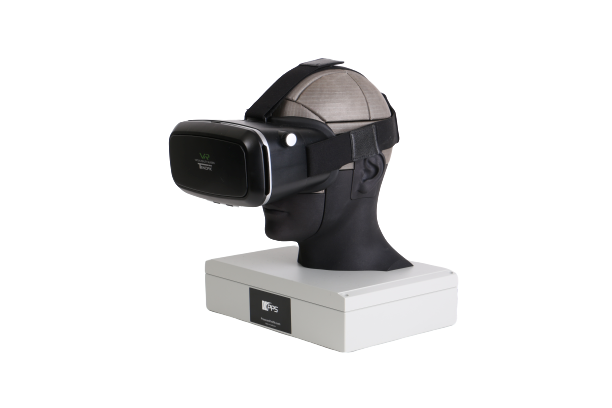In Pursuit of the Perfect Fitting Bra: How Tactile Pressure Sensing is Transforming Clothing Design
The way a dress fits and feels has a profound impact on daily life, influencing comfort, mobility, and even health. While traditional garment fitting has relied on generic sizing charts and subjective feedback, advancements in tactile pressure sensing technology are revolutionizing clothing design by providing precise, real-time data on how garments interact with the human body.
This technology enables designers to refine their creations to ensure that clothing is not just visually appealing but also ergonomically sound, performance-enhancing, and comfortable for long-term wear. Whether in bras, sports athletic gear, wearables or diapers pressure sensors are helping manufacturers strike the perfect balance between fit, function, and physical comfort.
Though it might not be obvious to the casual observer, the clothing worn by Olympic and professional athletes can be as sophisticated and technologically advanced as anything else in their training toolbox. Beyond simply making the athletes look good or protecting them from the elements, their outfits are often engineered to perform specific functions for their sport - such as reducing drag, improving aerodynamics, or optimizing muscle use. These garments are the result of meticulous design, testing, and refinement.
This focus on performance fit isn't just limited to elite sports. There is a broader shift happening in how consumers think about their clothing. People are increasingly demanding more from their garments - not only perfect fit but also improved functionality and wearability. From sportswear and shapewear to bras, diapers, and medical compression garments, there is growing interest in how clothes can better support the body.
Tactile pressure sensing technology plays a critical role in meeting these rising expectations.
The Science of Fit: Why Comfort Matters
A well-fitting garment significantly impacts comfort and freedom of movement. Clothing that aligns with the body's natural contours can enhance performance, prevent strain, and reduce friction, making you feel good . On the flip side, poor fit can lead to skin irritation, restricted circulation, or discomfort that limits how long or how often a garment is worn.
Tight seams or uneven pressure can create red marks and chafing. Overly restrictive garments may inhibit mobility or cause pressure points that creates irritation over time. Loose garments may fail to offer proper support or shift during movement, leading to reduced efficiency. In each of these scenarios, the root cause is the same: unbalanced pressure distribution.
Traditionally, these issues are caught late in the design process, through subjective wear tests that rely on human feedback. But human perception is limited - especially for low, static pressures, which are common in clothing. Tactile pressure sensors, on the other hand, can precisely quantify those forces, offering an objective, repeatable method for analyzing how clothing fits and functions on the body.
How Tactile Pressure Sensing Works in Clothing Design
Tactile pressure sensors are designed to measure force across a surface, capturing detailed data on pressure distribution, magnitude, and changes over time. This makes them an ideal tool in modern clothing development.
Capacitive tactile pressure sensors, in particular, are well suited to garment testing because they can detect pressures at very low levels (often less than 1 psi), which is important for evaluating tight-fitting clothing. These sensors are typically soft, thin, flexible, and conformable - qualities that allow them to be placed under the garments without altering how they are worn or perceived by the user.
For standardized testing, sensors can be embedded in mannequins or incorporated into sensing strips that is placed between the garment and a model’s body either mounting them with a pouch or inserting them with a thin stainless steel support. These setup allows manufacturers to evaluate how the garment fits under real or simulated conditions, without relying solely on subjective impressions.
Smart fabrics are also emerging, integrating tactile sensors directly into the textile. These responsive materials can monitor tension and pressure in real time, potentially allowing for clothing that adapts throughout the day, maintaining optimal comfort.
Revolutionizing Fit Across Different Wearable Categories
Bras & Undergarments: The Search for the Perfect Fit
A well-fitting bra provides support, comfort, and confidence, yet studies show that more than 80% of women wear the wrong bra size. A bra that is too tight may cause red marks, irritation, and discomfort, while a loose-fitting bra fails to provide the necessary support.
With tactile sensors, manufacturers can now test strap tension, underwire pressure, and band fit more effectively. By incorporating pressure-sensitive mannequins, lingerie brands can:
Detect pressure imbalances in different bra sizes.
Design adaptive bras that adjust throughout the day to body movements.
Reduce discomfort caused by digging straps or restrictive bands.
Medical & Rehabilitation Wearables
Medical garments, such as compression stockings, orthopedic braces, and post-surgical garments, rely on precise pressure application to be effective.
By integrating tactile sensors into the design process, healthcare brands can:
Ensure even compression to promote circulation in deep-vein thrombosis (DVT) prevention.
Prevent pressure sores in bedridden patients by optimizing mattress and fabric fit.
Develop post-surgical support garments that aid healing without causing discomfort.
Wearables & Protective Gear
Wearables - such as smart glasses, VR headsets, PPE, wristbands, and helmets - have become key tools in quantifying and enhancing user comfort. For professionals in physically demanding environments, well-fitted gear is not just a matter of comfort but of safety and performance. For example, wearing an ill-fitting over-the-ear hearing protector daily can cause irritation and reduce compliance. Similarly, uneven weight distribution in firefighter suits, military uniforms, or industrial exoskeletons contributes to fatigue, discomfort, and diminished efficiency.
Integrating tactile sensors into the design and evaluation of wearables enables precise, data-driven improvements. These sensors can:
Monitor and optimize pressure distribution to avoid hotspots and ensure a secure, comfortable fit.
Help designers fine-tune load-bearing components in exoskeletons to reduce strain on joints and muscles.
Enhance protective gear in contact sports - such as padded gloves or impact-resistant shorts - by identifying areas where additional protection or better fit is needed.
The Future of Clothing Fit: Where Technology is Headed
Pressure-sensing technology is redefining how we think about clothing design and fit. In e-commerce, tactile sensors are already being used to map sizing differences across shoe manufacturers - an effort aimed at reducing the nearly 40% return rate for online shoe purchases due to poor fit.
Textile-based pressure sensors are now being developed to measure fit and comfort in real time. These flexible, wearable sensors can be seamlessly integrated into various layers of garments, enabling designers and researchers to identify pressure points and optimize comfort during product development.
Looking ahead, smart fitting rooms may further transform the retail experience. By providing real-time pressure data, these systems can deliver objective, instant feedback on garment fit - a technology that has already seen early-stage deployment in select retail trials.
Beyond consumer convenience, there’s a compelling sustainability impact. Fit-related issues account for over half of all fashion returns, contributing significantly to textile waste and carbon emissions. By improving first-time fit, pressure-sensing and smart sizing technologies offer a promising path toward reducing waste and making fashion more sustainable.
Conclusion: The Future of Precision Fit & Comfort
As clothing design continues to evolve, the demand for better fit, enhanced comfort, and optimized performance is higher than ever. Tactile pressure sensing technology is playing a crucial role in meeting these expectations by offering scientific, data-driven solutions to garment design challenges.
By integrating this technology into the development process, manufacturers can create clothing that fits perfectly, feel comfortable, and supports wearers in every aspect of their lives. With innovations in AI-driven fitting systems, smart fabrics, and sustainable manufacturing, the future of fashion & style is shifting towards personalized, precision-engineered garments that put comfort first.



